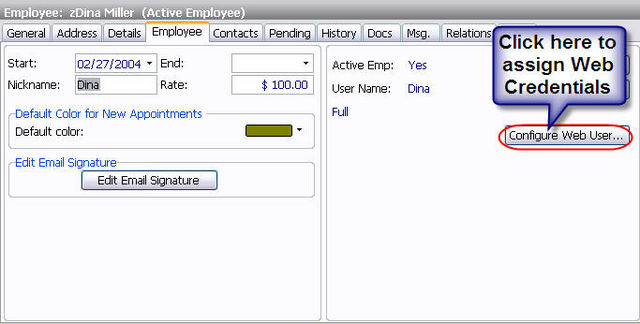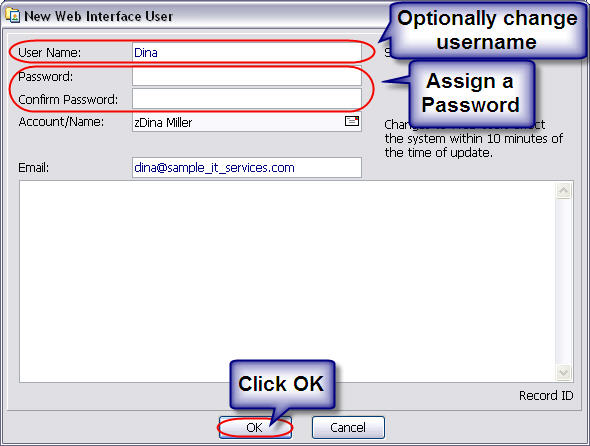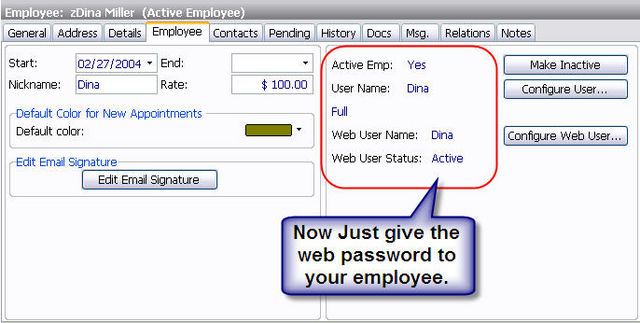KB: Limiting Employee Access to the Software Client or Web Interface
Contents
Introduction
Sometimes it is required to manage different types of employee accounts, and even limit certain types of employees from using the RangerMSP software client but still be able to log in to the RangerMSP Web Interface.
Managing Employee Credentials
Basically each active employee has a username and password which they can use in order to login via the RangerMSP client application. Once a user is created and for an employee you can define a separate Web user for the same employee. This way you have full control whether an employee can access the installed RangerMSP client only, or also use RangerMSP with a Web browser. In order to allow only Web access a local client is still required and therefore the way to support this is simply not providing them with the username and password for the RangerMSP client application; and to only give them the Web user credentials. Note: The local user and the Web one share that same privileges group.
Final Result
So, now you have 2 sets of user credentials; one set allowing the same RangerMSP user to log into the RangerMSP client and the other for the RangerMSP Web Interface. You have the option of choosing which credentials you need an employee to perform his duties with. This way you can have offsite employees such as accountants have the type of access they need, from anywhere in the world, while still remaining secure.
Using RangerMSP Permissions
That said, perhaps you may consider limiting employee’s privileges and then letting them work via the Client application or the Web as they wish. You can set each employee to be a member of a certain privilege group which has been edited to only perform actions authorized for those users to perform. These privilege settings take effect on the Web Interface & Software Client alike.
More details on privilege groups can be found here.


